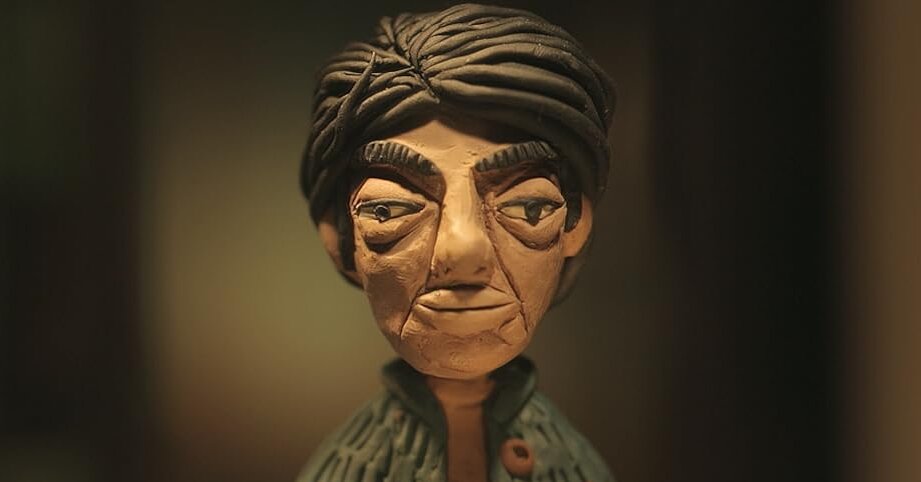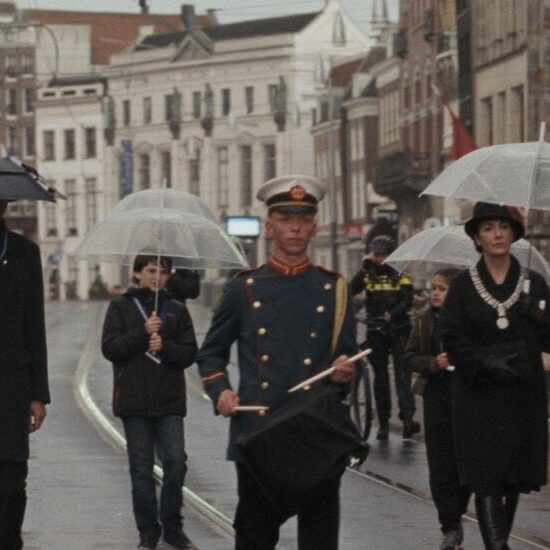
‘Vicenta’
In 2006, Vicenta, a poor and illiterate domestic worker in Buenos Aires, discovered that her 19-year-old daughter, Laura, who had a developmental disability, was pregnant; she had been raped by her uncle. Darío Doria’s gutting movie relates the Kafkaesque torment that followed as the family tried to get Laura an abortion. A network of doctors, lawyers, social workers and judges became embroiled in a case that surfaced the misogyny and ableism in Argentina’s legal and medical system. As Vicenta and Laura navigated this bureaucratic labyrinth — which went all the way from the local police office to Argentina’s Supreme Court to, eventually, the United Nations Commission on Human Rights — the clock ticked on, making it harder for Laura to terminate her pregnancy safely.
Rather than relay this tale as a traditional documentary, Doria employs an ingenious formal conceit. The entire film is visualized using Plasticine models, with a poetic voice-over that dramatizes Vicenta’s inner monologue. The figurines and sets are crafted with beautiful, painstaking detail, but they’re immobile; Doria creates the impression of movement through the use of light, sound and camera tricks, and embeds archival news footage within Plasticine TV sets to offer framing context. The result is an incredibly expressive yet unsentimental film that vividly captures the terrible process of a woman’s dehumanization.
‘Maaveeran’
This ironic Tamil riff on superhero movies is the kind of genre film that’s rare in Hollywood these days: a populist picture about people power. Madonne Ashwin’s superbly inventive caper revolves around a cartoonist, Sathya (Sivakarthikeyan), who lives in a slum in Chennai, in South India, with his mother and sister. He is the ghostwriter of a comic strip about a brave warrior, “Maaveeran,” that runs in the local newspaper, though his own personality is in marked contrast to his creations. When a local politician razes Sathya’s slum and moves all its dwellers into dangerously shoddy high-rises, our protagonist, to his feisty mother’s great chagrin, prefers to make do meekly than fight back.
All that changes when Sathya suffers an injury and begins to hear a voice that narrates his life and controls his actions — except the narrator makes him out to be a courageous hero rather than the coward he is. Reluctantly but helplessly, Sathya begins to battle the corrupt overlords. What ensues is an uproarious film, brimming with action, laughs and foot-tapping music, that doubles as a whip-smart inquiry into the very nature of heroism. As Sathya discovers, it is often those with nothing to sacrifice but themselves who are burdened with changing the world for the better.
‘The Great Seduction’
Celso R. García’s sun-drenched comedy is more of an extended April Fools’ gag than a movie, yet it just may leave you grinning from ear to ear. The fable-like story takes place on a small Mexican island called Santa Maria, which over the years has become abandoned and isolated. Industrial developments in neighboring areas have wrecked Santa Maria’s ancestral fishing economy, forcing its residents to live off monthly dole checks or emigrate in search of work. But Germán (Guillermo Villegas), who has resided in the town his whole life, refuses to lose hope. When he hears that a fish-packing company might be enticed to set up shop if Santa Maria manages to employ a doctor, Germán enlists his whole community in a crazy plan.
Enter Mateo (Pierre Louis), a city doctor who is banished to Santa Maria for a month as punishment for some drunk vandalism at his hospital. Led by Germán, the townspeople orchestrate a farce to convince Mateo that Santa Maria is the destination of his dreams. They pretend to play American football, learn how to make chicken tikka masala and even tolerate rock music. These high jinks may be simple and contrived, but they’re performed by a fantastic cast (including Yalitza Aparicio of “Roma” fame) that tenderly conveys the desperation of a forgotten town struggling to preserve its legacy as it is battered by the winds of change.
‘The Future Tense’
A border is never just a line in the sand — it is a rift through history, memory, even psychology, fundamentally shaping how we see and place ourselves in the world. This idea animates Christine Molloy and Joe Lawlor’s dense, thrilling essay-documentary about the relationship between Ireland, where they are from, and Britain, where they’ve lived since the 1980s and raised their teenage daughter. Two journeys undertaken by the couple frame the film: a flight from London to Dublin, and a road trip through Ireland to scout locations for a film about Rose Dugdale, an English debutante who became an I.R.A. volunteer. Facing the camera, Christine and Joe read out ruminations about family and country triggered by these journeys, while archival footage, home video, interviews and more illustrate their monologues.
Their narration is perfectly poised between droll and erudite, personal and political. Joe’s affecting recollection of his troubled mother’s life in the United States, Britain and Ireland is punctuated by ironic asides; at one point, he wonders facetiously whether the gap in his teeth had something to do with his family’s migrations across geographic and political chasms, as a pair of dentures slowly oozes out of his mouth. Elsewhere, the directors imagine a conversation between the mannequins of Queen Elizabeth I and the 16th-century Irish pirate Grace O’Malley at the Famine Museum in Louisburgh. Confronting a future that threatens to replicate a fraught past, the couple craft something that feels like a stand-up bit, an elegy and a wishful dream all at once.
‘Magoado’
There’s something strangely alluring about this skeletal Brazilian drama. Maybe it’s the incongruous combination of a flimsy narrative and gorgeous, intricate cinematography; or perhaps it’s the staging of soapy performances within a stylish, boxy frame that recalls silent films. We meet Peio (Diego Álvarez), a drunk, good-for-nothing fisherman in Santa Catarina in Brazil, as he lays passed out on the sand, lapped by ocean waves. He is a sorry sight, but the scene looks like a painting, dappled by sunlight and streaked with red and blue tints.
Rubén Sainz’s feature mounts a simple, even trite tale: Peio is forced to take charge of his life when his estranged adolescent son is suddenly, mysteriously sent back to him. But this familiar narrative feels fresh and startling onscreen, rendered as it is with an extraordinary visual sensitivity. As the film unfolds, Peio’s miserable existence and cantankerous demeanor contrast with the serenity of the setting — until, by the end, our protagonist finally seems to see in his life the beauty that the camera sees throughout.













